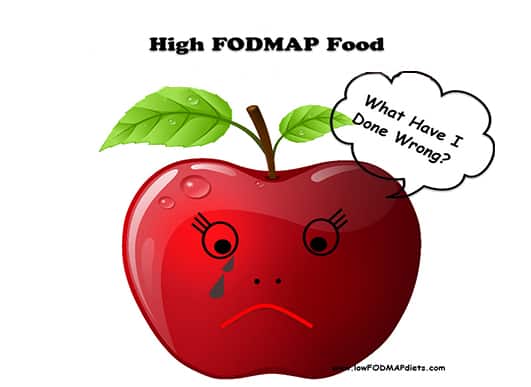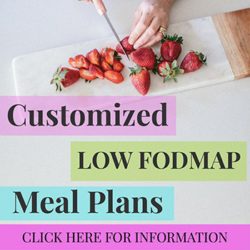Low FODMAP Diet Phases
An IBS diagnosis comes as both a relief and a discomfort for most people. Relief because the cause of all the distress and various digestive malfunctions is finally revealed; discomfort because it means that there may be a lot of dietary adjustments to be made and favourite food to be given up. For those like me who suffer from Irritable Bowel Syndrome (IBS), adopting a low FODMAP diet is an important part of relieving IBS symptoms.
In this article I describe how I have approached the elimination, reintroduction and maintenance phases of the low FODMAP Diet, but it is always recommended to be attentively followed by a dietitian, who is specialised on the low FODMAP Diet, before starting this journey.
Low FODMAP Diet for IBS
A low FODMAP diet is one of the most effective IBS diet plans specifically designed for IBS sufferers. FODMAP is an acronym that stands for:
Fermentable
Oligosaccharides (Fructans and Galacto-oligosaccharides)
Disaccharides (Lactose)
Monosaccharides (Fructose)
And
Polyols (Sorbitol, Mannitol, Maltitol, Xylitol and Isomalt)
This IBS diet has been found successful in 75% of the cases. People who undertake this diet have to avoid foods that have a high content of all the elements mentioned above. Normally, when a dietitian tells IBS sufferers about the foods that they have to eliminate from their diet, the initial understanding is that they will have to give up these foods for life, but that is not always the case. Also it is important to remember that the low FODMAP diet is not a one size fit all, type of diet, it depends on each individual level of intolerance to certain food. This is why it is important to carefully follow the two initial phases of the diet and then adjust the FODMAP intake accordingly.
The phases of the low FODMAP Diet are:
1. The Elimination Phase
2. The Reintroduction Phase
3. The Maintenance Phase
The Initial Low FODMAP Elimination Phase
In this first phase of the diet, you will have strict instructions to eliminate all foods that are high in FODMAPs, in order to identify all the food that trigger those horrible IBS symptoms.
Here is a list of tested food that you can print, but if you have a Smartphone, you should invest a few dollars in the Monash University low FODMAP app, which has all the food that has been tested so far. It is very easy to understand and follow, as it uses a traffic light system, the food that have been tested high in FODMAPs, have a red circle next to them and need to be avoided in this phase, the ones with the orange circle have medium FODMAP content and the one with a green circle have been tested low FODMAP content. During the elimination phase it is advisable to stick to the food that has the green circle, but as we are all different, some of us have intolerance also to food that are low FODMAP for those quantities (green circle).
The Low FODMAP Diet Elimination Phase will usually last between 2 and 6 weeks (I have heard of people following this phase for as long as 12 weeks) depending on the severity of your Irritable Bowel Syndrome. If you follow the instructions of the dietitian, you should start feeling better after being on the elimination diet for only one or two weeks. Your IBS symptoms will diminish and your digestive health will start to improve as time passes. As part of this phase it is important to record daily all the food eaten and the quantities, together with a description of any symptoms that may happen after eating.
Low FODMAP Diet Elimination Phase Food Diary To Print Here
During this phase the majority of the symptoms should start to disappear. If there is not an improvement in the symptoms, it would be wise to consult your doctor and dietitian, to investigate other possible causes for the symptoms.
The Low FODMAP Reintroduction Phase
The next phase of the Low FODMAP diet it is very important and starts when you have completed the elimination phase and all the IBS symptoms have disappeared. The duration of the second phase is about 8 weeks; in this period the dietitian will ask to systematically reintroduce every week a different high FODMAP group back into the diet. Let’s say that in week 1 of Phase 2 you reintroduce lactose products (disaccharides). Have some milk or plain yoghurt three times, in week one (Monday, Wednesday, Friday), but leave one day gap in between, to monitor the symptoms. Start with a smaller amount of food first on the Monday and if no symptoms, increase the quantity of that food on Wednesday and increase it further on the Friday. If you experience IBS symptoms by eating that specific food, wait until the symptoms have completely gone away and then try a smaller portion of the same food or a different food of the same group of FODMAP.
Example:
WEEK 1: DISACCHARIDES (Lactose)
WEEK 2 and 3: POLYOLS (Sorbitol, Mannitol, Maltitol, Xylitol and Isomalt)
WEEK 4: OLIGOS-GOS
WEEK 5-6-7: FRUCTANS
WEEK 8: MONOSACCHARIDES (Fructose)
For this article, I had the pleasure of corresponding and following the advice of Lee Martin MSc RD, who is a registered dietitian, and a researcher of the low FODMAP diet.
Lee was researching with his team at King’s College London the reintroduction phase of the diet and found that over 70% of the IBS sufferers who did the elimination phase and then successfully re-introduced some high FODMAP food, were able to keep their IBS symptoms away, by following a modified (less strict) low FODMAP diet.
Here you can find more details about Lee and his book Re-challenging and reintroducing FODMAPs, which can be purchased from Amazon kindle:
Low FODMAP Reintroduction Phase Example Chart
N.B. Your dietitian may start you on a different FODMAP group and challenge different food than the one in the above example.
Record on the below printable diary, what you have consumed, the quantity and how you have felt afterwards:
Low FODMAP Diet Reintroduction Phase Symptoms Diary To Print Here
If you had no symptoms triggered by the food eaten the previous week, start with another FODMAP group on the Monday of week two and so on. The one by one introduction of each food group will help the dietitian determine the tolerance your digestive system has for that particular type of food. Some people are ok to have small doses of a certain food, but they suffer from IBS symptoms with larger quantities, while others can’t have any at all. Also the food intolerance for FODMAPs works on accumulation, if there are foods that you can tolerate in small quantities, but you consume them in the same meal or same day, without giving your digestive system the time to process each food, the accumulation of all the high FODMAP food (not just the last food you ate), can trigger your IBS symptoms.
For example, I really love avocado, hummus and mango. I know I can tolerate them all in small quantities, as long as I don’t eat them all in the same day, I have no reaction.
Low FODMAP Diet Maintenance Phase:
By now you should have identified the foods that are causing your IBS symptoms to flare up and you should know what FODMAPs to avoid, and what FODMAPs you can consume in moderation and you can now develop nutritious meal plans that work for you and your lifestyle.
With time you will also learn your own intolerance level to most food and when you feel comfortable you can always challenge the amount and the frequency of other high FODMAP food. Your diet needs to be only as restricted as you need, in order to avoid those nasty IBS symptoms, but if you have found that a certain high FODMAP food, does not cause any symptoms, even in large amounts, in this case you can carry on consuming it.
I wish you all the very best with the Low FODMAP elimination, re-introduction and maintenance phases. You can also listen to my podcast interview with RD Lee Martin, talking about the phases of the diet.
To learn more about my experience with the Low FODMAP diet, please read my other posts on this Low-FODMAP blog.
As usual this is my knowledge and experience, a registered dietitian should be your first point of contact.
References:
The Wiley Online Library: Evidence-based dietary management of functional gastrointestinal symptoms: The FODMAP approach
Monash University – FAQ – Low FODMAP Diet




Hi I have recently been diagnosed with ibs and was stunned as I only eat healthy stuff. I have now realised that a lot if it is high FODMAP
I look at the term diet and just that, a diet. It is not something you go on and off of, but what you eat daily. I can see why this helps. It gives the stomach a break and when you start to reintroduce foods, you can see just what causes the biggest issues. I will be giving this a try. I want freedom!
This sounds like an interesting diet for those who suffer from IBS. Would this diet be beneficial for any other kind of ailments?
Hi Heather, thanks for your comment. I’ve heard some people with inflammatory bowel disease (IBD) have also found benefits in this diet. See: http://shepherdworks.com.au/services/gpspecialist-section/reduction-of-dietary-poorly-absorbed-short-chain-carbohydrates.